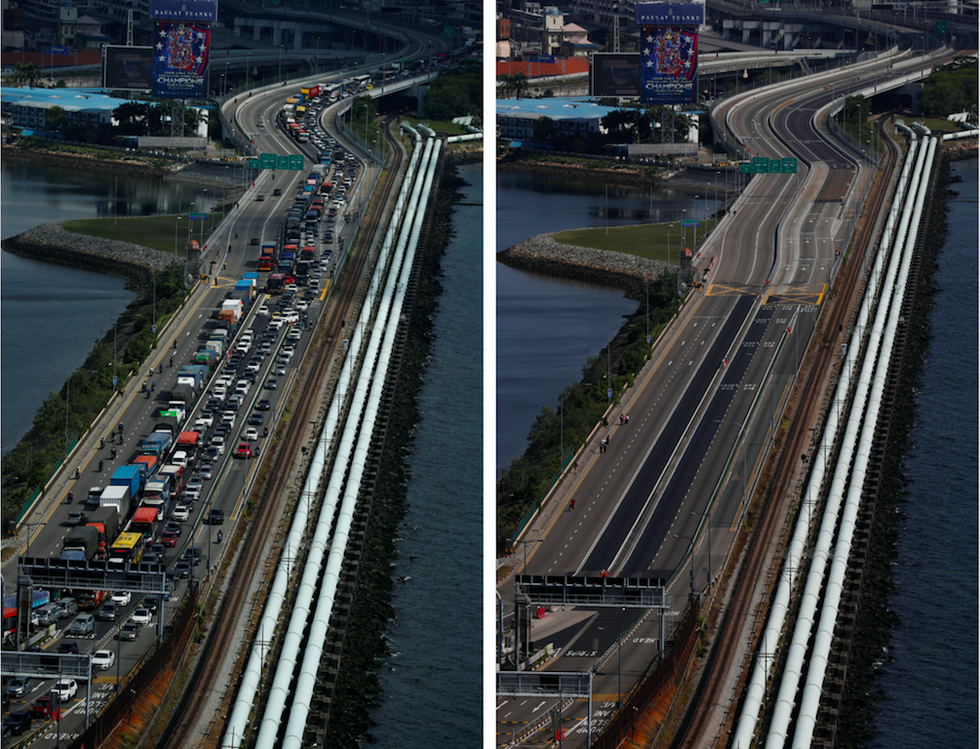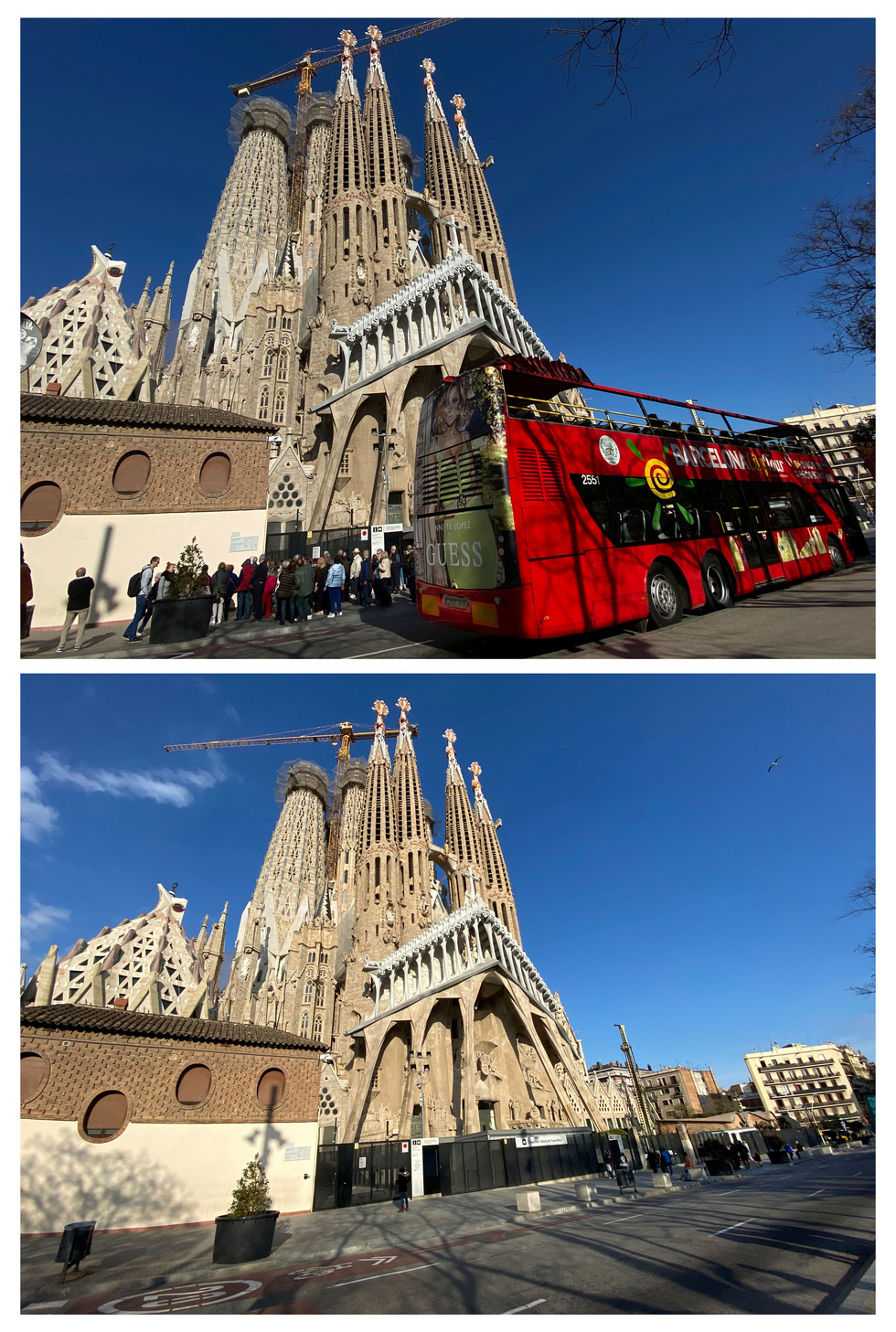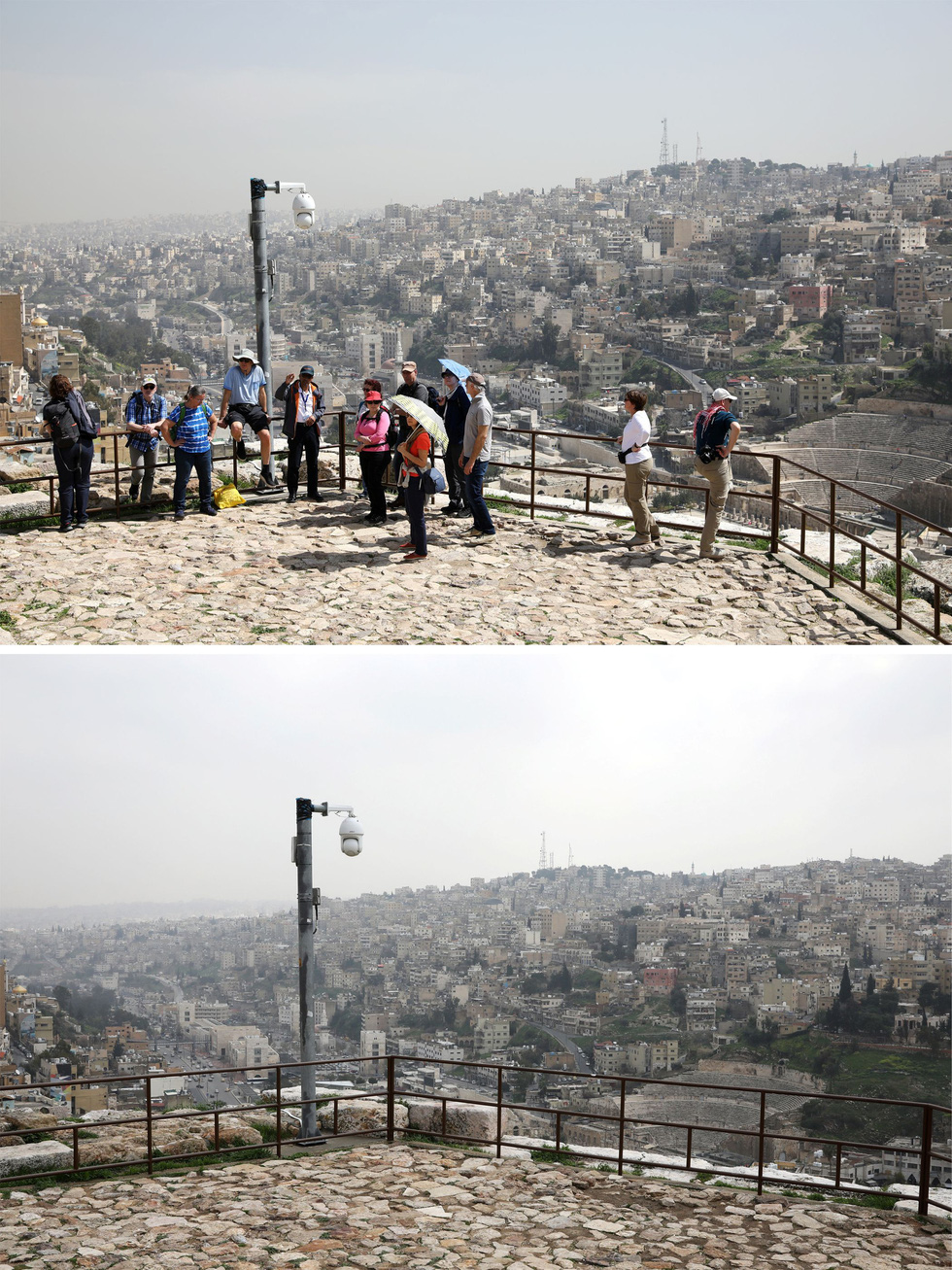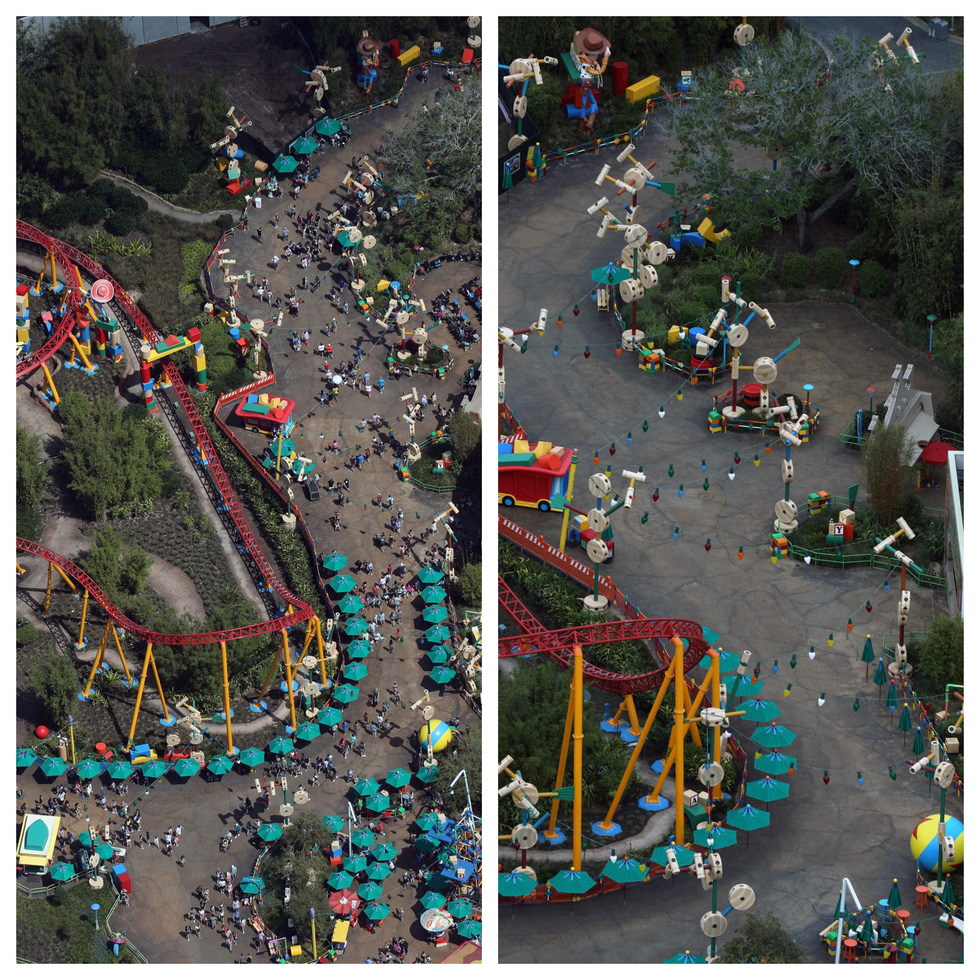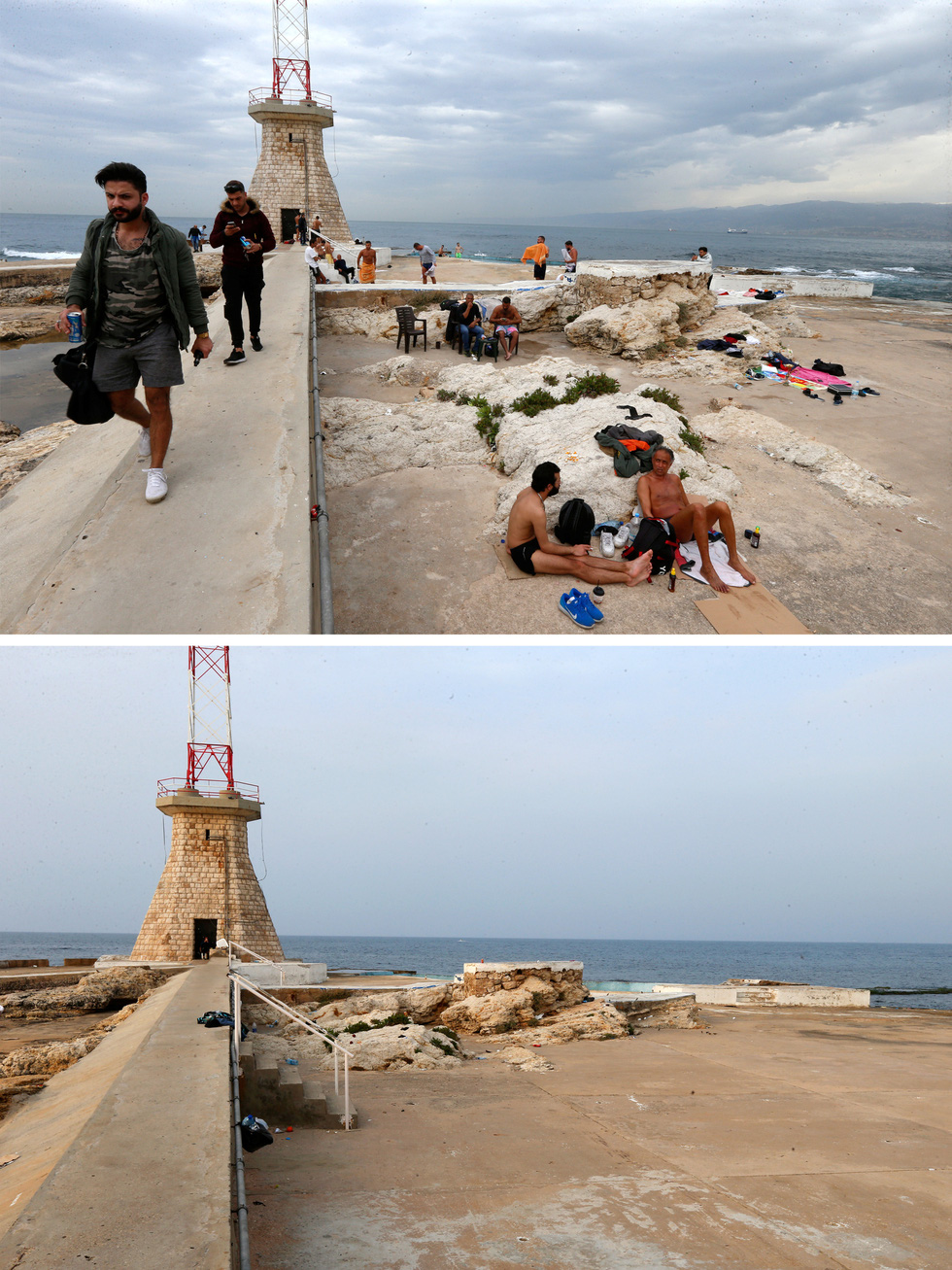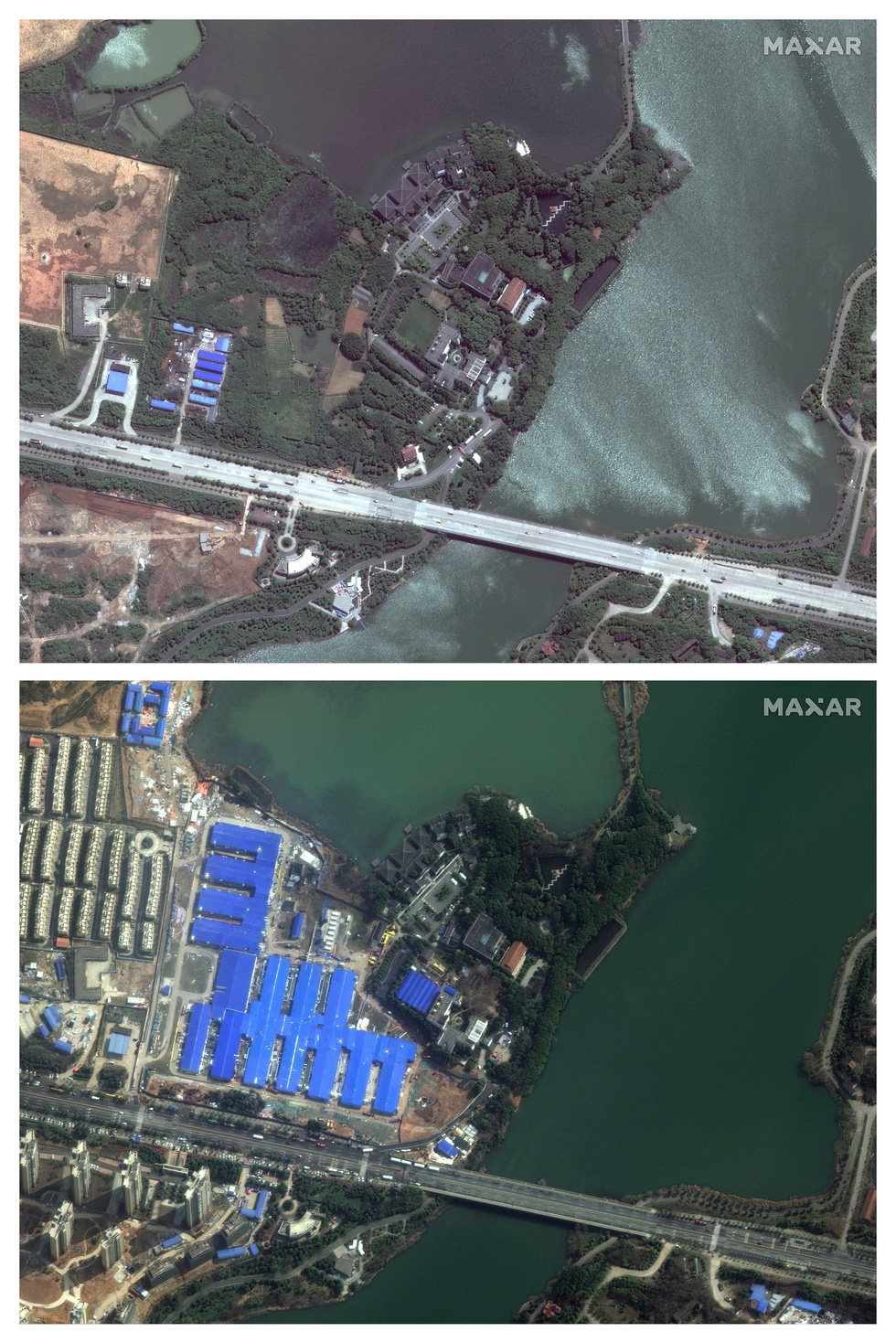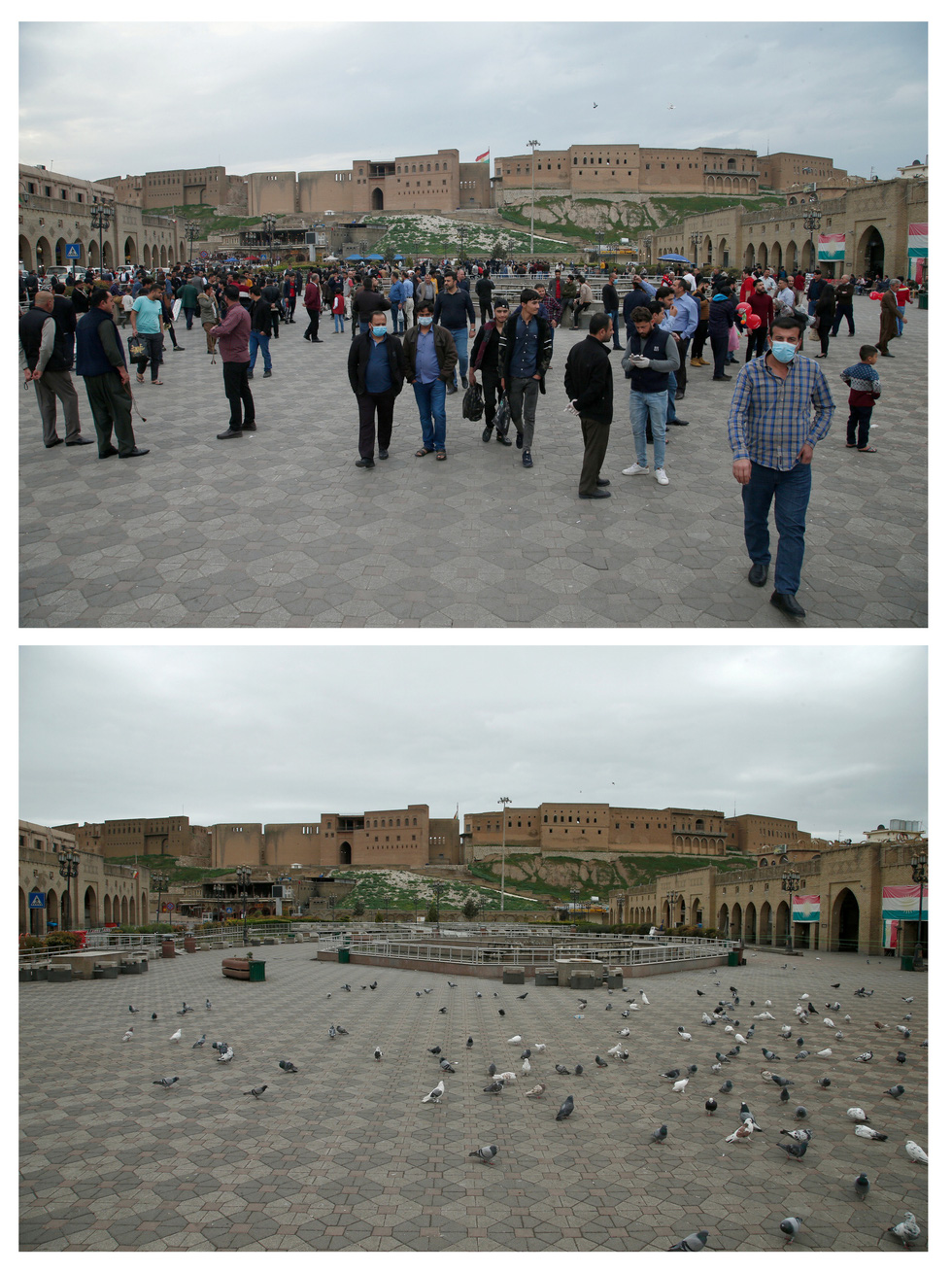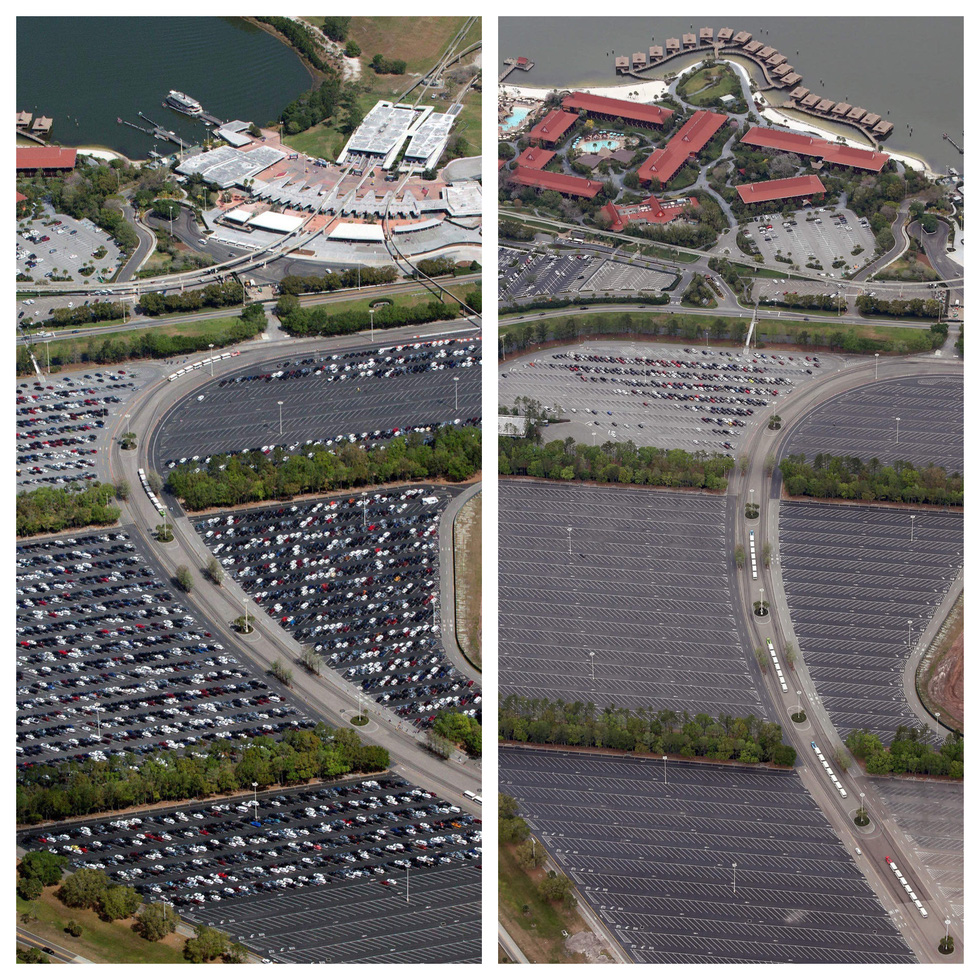GNO - Bài báo vedette của tuần báo kỳ 1043 vừa được Tiến sĩ Nguyễn Tường Bách từ CHLB Đức gửi riêng cho Giác Ngộ, ông nhận định: Corona: Biến cố của thế kỷ.

TS Bách viết: "Không ai nghi ngờ gì, rõ ràng đây là một nạn dịch lịch sử, xảy ra thình lình như một trận sóng thần giữa trời quang mây tạnh. Thế giới hoảng loạn chưa từng thấy, ta có thể nhắc lại lời Thủ tướng Đức Angela Merkel, biến cố này phải được xem là kinh hoàng nhất kể từ ngày chấm dứt Thế chiến thứ hai vào năm 1945".

Tại sao lại có nhận định như vậy? Những ảnh hưởng lớn lao từ đại dịch đến toàn cầu và mỗi người? Đại dịch Covid-19 biểu lộ nhiều điều đáng chú ý nào? - Mời bạn đọc đón xem bài phân tích với nhiều thông tin ý nghĩa
Nguyễn Tường Bách (CHLB Đức)
Khi tác giả viết những dòng này, đại dịch Corona đang tiếp diễn khốc liệt trên thế giới. Châu Âu đang ở cao điểm của dịch bệnh, số tử vong tại Ý đã cao hơn so với Trung Quốc.
Tại các nước Tây Âu khác như Tây Ban Nha, Pháp, Đức, Anh… số ca lây nhiễm vẫn đang tăng theo cấp số nhân. Tại Mỹ, người ta tiên liệu dịch còn bùng phát mạnh mẽ lên đến hàng chục triệu người. Châu Phi đã có trên 27 quốc gia bị nhiễm và không khó để đoán rằng, một khi dịch bệnh lan tỏa tại châu lục này thì số người mắc bệnh và tử vong sẽ tăng nhanh hơn các nơi khác trên thế giới.
Không ai nghi ngờ gì, rõ ràng đây là một nạn dịch lịch sử, xảy ra thình lình như một trận sóng thần giữa trời quang mây tạnh. Thế giới hoảng loạn chưa từng thấy, ta có thể nhắc lại lời Thủ tướng Đức Angela Merkel, biến cố này phải được xem là kinh hoàng nhất kể từ ngày chấm dứt Thế chiến thứ hai vào năm 1945.
Về độ nguy hiểm của dịch bệnh
Tới nay người ta tính khoảng 250.000 người nhiễm bệnh và con số tử vong ở khoảng trên 10.000 (*). Nếu ta dùng một phép tính đơn giản từ hai con số đó thì xác suất tử vong khoảng 4%. Tỷ lệ tử vong tại Vũ Hán được nêu chính thức trong tạp chí Nature Medicine ngày 9-3-2020 là 1,4%. Các tỷ lệ này thực ra không hề chính xác, vì con số người chết tương đối rõ ràng, nhưng số lượng thực sự người bị nhiễm thì lại rất mơ hồ. Khoảng 80% người bị nhiễm chỉ có triệu chứng rất nhẹ nên không mấy ai chịu thử. Đó là chưa kể nhiều nước trên thế giới khuyên dân chúng không nên vội thử vì sợ các trung tâm y tế quá tải như tại Anh hay Đức.
Vì lý do đó số ca bị nhiễm được cho là cao gấp 6 đến 10 lần so với con số được thông báo, tùy theo quốc gia. Trên cơ sở này, ta có thể nói tỷ lệ tử vong của Covid-19 tối đa là 1%. Con số nghe qua thì nhỏ, nhưng 1% của một triệu người là 10.000 nạn nhân và mỗi người chết là một thảm cảnh, một số phận, không ai được phép coi nhẹ. So với bệnh cúm mùa với tỷ lệ tử vong chỉ 0,1% thì bệnh Covid-19 nguy hiểm hơn, nhất là cho những ai có tiền sử bệnh án hay suy yếu đường hô hấp. Bệnh cúm mùa là bệnh của mùa đông. Tại Đức, mỗi năm có khoảng 850.000 người chết, trong đó khoảng 15.000-20.000 là nạn nhân trực tiếp của bệnh cúm mùa. So với số tử vong của bệnh cúm mùa thì số nạn nhân của Covid-19 rất nhỏ. Thế thì tại sao cả xã hội hoảng loạn?
Toàn thế giới rúng động vì hai lý do. Một, dịch bệnh lây lan quá nhanh, theo cấp số nhân. Hai, chưa có thuốc chữa, chưa có vắc-xin phòng bệnh. Xưa nay mọi lo ngại của ngành y tế trong mọi cơn dịch vốn đều vì hai lý do đó. Đó là nguyên nhân đích thực của cơn khủng hoảng toàn cầu hiện nay.
Thực ra, nhìn một cách toàn thể, thì dịch bệnh là một loại rủi ro tự nhiên của đời sống, nhất là trong một thời kỳ mà con người đi du lịch, tiếp xúc dễ dàng và nhanh chóng trên khắp thế giới như hiện nay. Đối với các nhà quản lý y tế vĩ mô thì một trong những giải pháp đối trị là cứ để dịch lan rộng nhưng trong vòng kiểm soát và hạn chế tử vong. Một khi dịch lan đến khoảng 60-70% quần chúng thì dịch tự ngưng vì con người đã miễn dịch. Giải pháp “mềm” này đã được bước đầu áp dụng tại Anh và Hà Lan trong những tuần qua nhưng nay đã bị bác bỏ vì thiếu hiệu quả và áp lực dư luận.
Hạ tuần tháng 3 năm 2020, thế giới áp dụng phương pháp “cứng” nhằm đối trị nạn dịch. Toàn cầu đang đứng trước một cơn khủng hoảng chưa từng có. Ngày 20-3, con số tử vong nằm ở mức 10.000 nhưng sự hoảng loạn đã lên cao ngang tầm của một cuộc chiến tranh quân sự.
Sự hoảng loạn bất ngờ này mang nhiều nét kỳ lạ, nằm xa một vấn nạn thuần túy y tế.
Xã hội rối loạn chưa từng có

Nước Anh đã từ bỏ thái độ phớt tỉnh trong việc đối trị dịch bệnh, họ thừa nhận sai lầm. Nước Đức đã bắt đầu phong tỏa một vài thành phố và khả năng lớn là họ sẽ phong tỏa toàn quốc. Các nước châu Âu khác như Ý, Tây Ban Nha, Pháp, Áo… đã dùng mệnh lệnh hành chánh, cấm dân chúng ra khỏi nhà trừ phi có lý do chính đáng. Tại Mỹ, tiểu bang California với khoảng 40 triệu dân cũng đã ra lệnh phong tỏa từ ngày 20-3.
Những ai đã sống tại châu Âu và Mỹ mấy mươi năm qua cũng đều ngơ ngác trước những cảnh tượng kỳ lạ của phố phường. Đó là những thành phố xem như đã chết, tê liệt, câm lặng. Thảng hoặc vài nơi bán hàng thì người mua đứng xa nhau cả mét, nhìn nhau bằng cặp mắt lo ngại. Họ vơ vét những món hàng xem ra chẳng thật cần thiết, xuất phát từ một nỗi lo vô cớ. Con virus Corona chưa lan đến nhưng sự sợ hãi đã tới trước.
Thế nhưng cái đảo lộn lớn nhất không nằm ngoài đường mà trong mọi gia đình. Trường học đóng cửa, trẻ con ở nhà và cần người trông giữ. Phụ nữ phải ở nhà trông con, trong đó có nhiều người làm trong ngành y tế, bệnh viện, nơi đang cần nhân lực. Một số người phải làm việc ở nhà, một số khác bắt đầu thất nghiệp, nỗi lo lắng và phẫn nộ ngày càng tăng. Vài nhà xã hội tiên liệu bạo lực trong gia đình sẽ tăng nếu vợ chồng con cái bị nhốt giữa bốn bức tường.
Điều đáng nói trong đại dịch này là, tuy số tử vong chưa gọi là cao, nhưng nó đã “thấm” vào mọi tế bào của đời sống, kể cả trong những góc cạnh vô danh nhất. Người ta kể đến với giọng bùi ngùi về những thảm cảnh trong viện dưỡng lão, nơi mà vợ chồng săn sóc nhau trong tuổi già, nay bị cấm gặp gỡ. Tài xế xe tải kẹt biên giới ròng rã vài ngày, phải cần tiếp tế thức ăn. Kiều dân cố “chạy” về quê hương trốn dịch bị kẹt trên đường. Những kẻ buôn bán lẻ, phục vụ công nhật trong ngành du lịch, khách sạn hay tiệm ăn, nay không còn thu nhập. Thậm chí người ăn xin nay cũng không còn “khách”.
Điều kỳ lạ trong trận dịch này so với SARS hay Ebola nhiều năm trước là toàn thể xã hội, từ tầng lớp cao cấp nhất đến góc tối nhất của đời sống, đều đang bị chao đảo và thiệt hại. Phải chăng tính chất đó báo hiệu một chuyển biến vĩ mô?
Kinh tế đảo lộn và suy thoái
Khoảng giữa tháng 2-2020 ta còn chứng kiến chỉ số Dow Jones của Mỹ nằm ở khoảng 29.400. Chưa đầy 6 tuần qua chỉ số này chỉ còn 19.000. Đó là một sự sụp đổ khoảng hơn 1/3 trị giá cổ phiếu. Các chỉ số tại thị trường chứng khoán châu Âu cũng thiệt hại tương tự. Sự mất giá này chưa từng có tiền lệ trong lịch sử. Không khó để biết rằng thế giới đang đứng trước một sự suy thoái nặng nề và lâu dài. Các đại công ty như Boeing tại Mỹ hay Lufthansa tại Đức phải cần hỗ trợ vốn của Nhà nước. Một số lớn xí nghiệp toàn cầu phải ngừng sản xuất, thậm chí phá sản. Vô số các công ty hạng trung lâm vào khủng hoảng vì thị trường tiêu thụ bất ngờ biến mất. Một số công ty khác bị đình trệ sản xuất vì thiếu nguồn cung ứng vật tư từ quốc gia bị dịch trước đó là Trung Quốc. Trong bối cảnh này, tính chất toàn cầu hóa lần đầu tiên cho thấy mặt trái của nó, đó là sự lệ thuộc quá nhiều vào các đối tác châu Á.
Một mặt khác của nền kinh tế các nước là thành phần kinh tế gia đình, thành phần hành nghề tự do, họ cũng lâm vào cảnh túng quẫn. Đó là các loại kinh doanh tuy nhỏ, nhưng họ phải thuê nhân công, phải thuê mặt bằng. Một khi các thành phố bị phong tỏa, nguồn thu nhập của họ lập tức bị cắt. Họ đành sa thải nhân công và thường phải tiếp tục chi trả phí mặt bằng. Tỷ lệ thành phần đó nằm khoảng 5-10% trong một quốc gia. Tại một nước dân số hơn 80 triệu dân như Đức, thành phần đó lên đến khoảng 5 triệu người.
Trước tình hình kinh tế vô cùng bi đát, các chính phủ của Mỹ, Tây Âu và cộng đồng châu Âu dự kiến sẽ tung những gói hỗ trợ tài chánh khổng lồ để giải cứu. Nhưng “giải cứu” cũng chỉ là cho vay, làm sao có chuyện tặng không. Thường thì các công ty then chốt mới có khả năng thụ hưởng các chương trình này, trong đó một trong những giải pháp đáng chú ý là Nhà nước sẽ tham gia cổ phần, nói khác đi là công ty được “quốc hữu hóa”. Đây sẽ là một nét đáng chú ý về mặt kinh tế trong thời kỳ “hậu Corona”.
Dịch Corona – những điều có thể
Bên trên là những dòng miêu tả sơ lược về đại dịch Corona trong thời kỳ đầu của nó tại châu Âu và Mỹ. Thời gian còn lại của tháng 3 và hết tháng 4-2020 sẽ là sáu tuần quyết định sự phát triển của bệnh, tổn thất nhân mạng, tổn thất kinh tế và xáo trộn xã hội. Không ai biết được điều gì chắc chắn sẽ xảy ra.
Thế nhưng ngay trong thời gian này ta đã thấy đại dịch Corona biểu lộ nhiều điều đáng chú ý.
Một, nền kinh tế thế giới suy sụp trầm trọng, các chính phủ đã cạn kiệt đòn bẩy ứng cứu. Lãi suất là một trong những đòn bẩy quan trọng nhất của nhà nước, nay đã lùi về số không. Thời kỳ phồn vinh và phát triển của nhiều quốc gia, trong đó có Việt Nam, trong thời kỳ toàn cầu hóa nay đã qua. Ngược lại, nền kinh tế suy thoái này sẽ cần cả chục năm mới hồi phục, nó sẽ cần một sự tái cấu trúc. Nhiều công ty sẽ chết, một số khác ra đời. Nhiều ngành nghề biến mất, một số khác phát sinh.
Hai, sự toàn cầu hóa như mô hình hiện nay đã lộ ra những nhược điểm trầm trọng. Đó là sự lệ thuộc quá mức vào “cơ xưởng thế giới” Trung Quốc. Khi Trung Quốc ngưng sản xuất thì nhiều công ty Âu Mỹ phải chịu bó tay, chờ nguồn tiếp tế. Qua trận dịch này người ta bừng tỉnh về cái giá phải trả nếu mãi lệ thuộc vào một nguồn hàng và vào một quốc gia nhiều tham vọng. Hiệu ứng hiển nhiên của tình trạng này là người ta sẽ đa phương hóa các nguồn cung cấp trên thế giới.
Bốn, tâm thức xã hội của dân chúng phương Tây trở nên đáng lo ngại sau nhiều thập kỷ sống trong hòa bình và phồn vinh. Khi đại dịch đã hoành hành tại Trung Quốc và bắt đầu tràn đến châu Âu, con người vẫn coi nhẹ mối hiểm nguy này, cho rằng sẽ không chạm đến mình. Khi các cơ quan công quyền ban hành lệnh phong tỏa, nhiều người trẻ vẫn ngông nghênh xem thường, hoàn toàn không ý thức trách nhiệm mình trong xã hội. Một số khác thì có những hành động bất thường, như tàng trữ thức ăn, xăng dầu, thậm chí mua thêm súng đạn như tại Mỹ. Ý thức cộng đồng lẽ ra phải có thì nay nhường chỗ cho một dạng mới của bạo lực và vô cảm.
Năm, về mặt chính trị, đây là ý chính của bài này. Sau đại dịch Covid-19, nền chính trị trên thế giới có lẽ sẽ có những thay đổi to lớn. Chủ trương toàn cầu hóa, vốn đã bị các biến cố di dân ngăn chặn trong thời gian qua, nay sẽ quay đầu sau trận đại dịch này, như dự đoán của nhiều nhà quan sát. Cộng đồng châu Âu vốn đã bị chính sách của Tổng thống Mỹ cũng như biến cố Brexit của Anh làm suy yếu. Thêm vào đó, chính sách di dân và thái độ đóng cửa các nước Đông Âu làm phân hóa thêm cộng đồng gồm 27 nước này. Nay, trong đại dịch Covid-19, khi các quốc gia ai lo phần nấy, rút lui, tự phong tỏa và đóng cửa biên giới, cộng đồng châu Âu tự chấm dứt vai trò của mình, ít ra trong một thời gian nhất định. Trên phạm vi thế giới, thế đối đầu giữa Mỹ và Trung Quốc càng căng thẳng. Nước Nga đang tổn thương nặng nề về giá dầu và kinh tế. Iran khủng hoảng toàn bộ thể chế và xã hội. Những điều kể trên có thể tăng cường độ từng ngày, ta không thể loại bỏ khả năng chiến tranh xảy ra bằng một mồi lửa nào đó. Khi khó khăn nội bộ chồng chất thì hiềm khích bên ngoài dễ phát sinh chiến tranh, lịch sử thế giới đã chỉ rõ.
Thay lời kết
Thế giới luôn chuyển biến và mọi chuyển biến đều có nhiều nguyên nhân, kể cả các nguyên nhân khó thấy. Đó là quy luật Duyên khởi về đời sống. Chúng ta không thể biết hết tất cả các yếu tố tác động lên một hệ thống vĩ đại, trong đó chúng ta đang sống. Nhưng điều rõ nét nhất là phần lớn nguyên nhân đều do con người gây nên. Dịch bệnh không phải là thiên tai như sóng thần hay động đất mà con người là tác nhân trực tiếp. Còn hệ thống chính trị và kinh tế xã hội thì quá hiển nhiên, con người đã xây dựng lên nó.
Thiên nhiên vốn rộng lòng. Một điều thú vị hiếm hoi trong thời kỳ này là thông tin về bầu không khí tại Vũ Hán và dòng nước xanh tại Venise (Ý). Chỉ sau vài tuần vắng bóng công nghiệp, bầu trời Vũ Hán vô cùng trong xanh như không ảnh cho thấy, so sánh với thời gian trước đó đen kịt một màu. Tại Venise, thủ đô du lịch của Ý, nơi mà du khách chê trách chất nước ngầu đục hôi hám trong các kênh rạch, cũng sau vài tuần vắng người, dòng nước xanh trong đã hiện ra, nhìn đến đáy, với cơ man nào là cá.
Những ai có tâm cần phải động lòng suy nghĩ trong đại dịch. Có lẽ chúng ta đã quá tàn phá thiên nhiên, sinh hoạt đã quá vô độ. Về mặt chính trị, các quốc gia đều quá ích kỷ, cho quyền lợi quốc gia mình là trên hết. Về mặt kinh tế, chúng ta đều quá chạy theo lợi nhuận, lấy con số tăng trưởng để làm thành tích, bất kể môi trường. Về mặt xã hội, chúng ta đều lấy tự do cá nhân làm chuẩn mực, coi thường cộng đồng và tha nhân.
Tất cả những thứ đó đã sinh ra các nhà lãnh đạo kỳ dị, các chủ trương bất thường, các phong trào theo chủ nghĩa dân tộc đang phát triển mạnh. Dù vậy, nhiều năm qua, thế giới vẫn chưa thức tỉnh.
Thế thì phải chăng đại dịch này là bài dạo đầu cho một sự sắp xếp lại, một cuộc tái cấu trúc vĩ đại?
(*) Số liệu ngày 20-3-2020: 245.859 người nhiễm, 10.031 tử vong
Bài báo vedette của tuần báo kỳ 1043 vừa được Tiến sĩ Nguyễn Tường Bách từ CHLB Đức gửi riêng cho Giác Ngộ, ông nhận định: Corona: Biến cố của thế kỷ.

